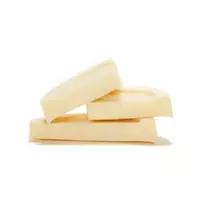Confectionery fat

Confectionery fat refers to food fats that are generally derived from plant material. However, some types of confectionery fat, in addition to vegetable oils, contain whale salomas, as well as beef or pork fat. Often, confectionery fats include coconut or palm nuclear oil. In its structure, confectionery fat is nothing more than a solid, the colour of which can range from white to a light yellow hue.
Confectionery fat composition
The taste, as well as the consumer properties of confectionery fat, depend primarily on the composition of the product. The composition of confectionery fat is determined by the recipe of a particular type of product. For example, confectionery fat for bakery products will include up to 22% vegetable oils and up to 65% of a mixture of whale fat and vegetable salomas. The composition of solid confectionery fat includes palm oils, which determine some of the distinctive properties of the product.
To make each individual type of confectionery, sweets and pastries, a certain type of confectionery fat is used. As a rule, the subspecies of confectionery fat differ in the mass proportion of the content of a particular kind of natural fat. However, in any case, the composition of cooking fat will contain both animal fat and vegetable fat, as well as food additives.
The harms of confectionery fat
Perhaps the composition of the product is the main harm of confectionery fat to the human body. In addition, attention should be paid to the high calorie content of confectionery fat. The modern process of confectionery production is simply not conceivable without the use of confectionery fats. The vast majority of bakery products, pastries, cookies, cakes, waffles, pies, sweets and sweets, as well as ice cream and desserts contain confectionery fat.
Confectionery fats are used as a dietary supplement that binds all the ingredients of the product together. In addition, confectionery fat improves the nutritional quality of the finished product. The calorie content of confectionery fat is at a fairly high level and is 897 kcal per 100 grams of product. Many nutritionists believe that the harm of confectionery fats can affect the work of the human digestive system. Frequent and uncontrolled consumption of confectionery prepared using confectionery fat leads to rapid weight gain and obesity.
The most confectionery fats contain chocolates, as well as glazes and bar chocolate. The harm of confectionery fat is associated with the distinctive chemical parameters of the product. The thing is that the composition of confectionery fat is scarce if you consider the product for the presence of organically active compounds, but the product is well absorbed by the body. As a result, you consume empty calories in large quantities, which in reality contributes to rapid weight gain.
confectionery fat 897 kCal
Energy value of confectionery fat (Ratio of proteins, fats, carbohydrates - ju):
Proteins: 0 g (~ 0 kCal)
Fats: 99.7 g (~ 897 kCal)
Carbohydrates: 0 g (~ 0 kCal)
Energy ratio (b | y): 0% | 100% | 0%
 Español
Español Français
Français Português
Português Русский
Русский 简体中文
简体中文 繁體中文
繁體中文 日本語
日本語 한국어
한국어 العربية
العربية Türkçe
Türkçe Қазақ
Қазақ Deutsch
Deutsch Italiano
Italiano Українська
Українська
